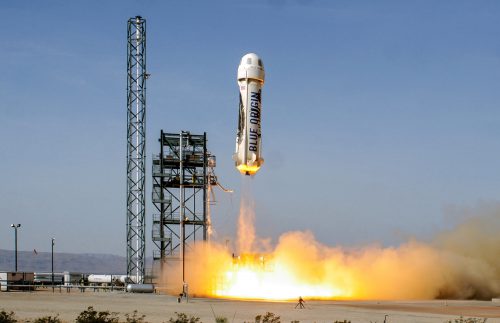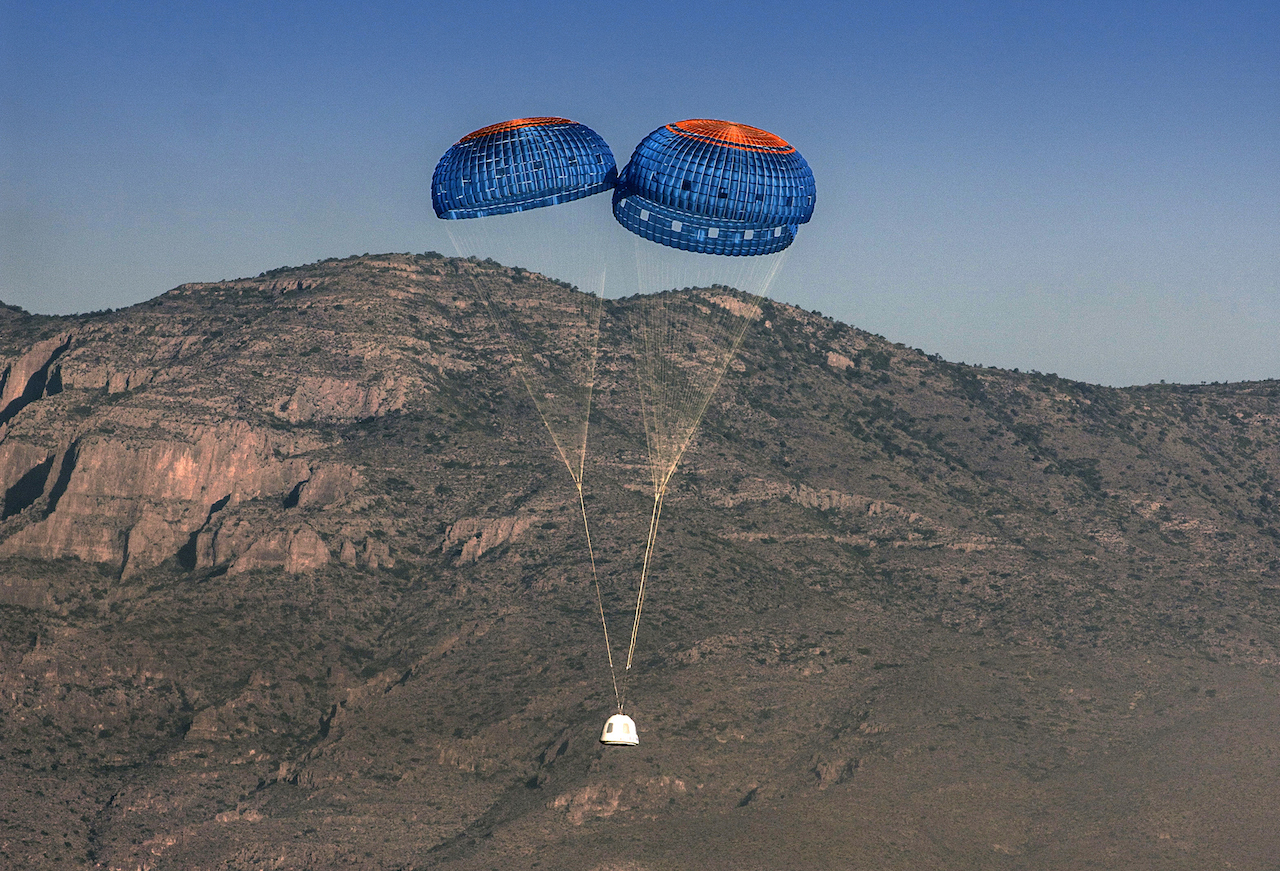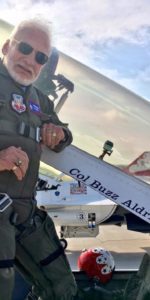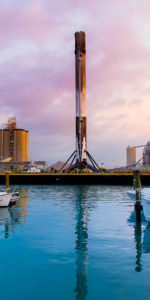
Billionaire entrepreneur Jeff Bezos and his Kent, Wash.-based company Blue Origin have been making progress at a steady rate the last few years, developing and testing a fully reusable, suborbital New Shepherd flight system and making plans to resurrect dormant Cape Canaveral Launch Complex-36 (LC-36) to fly it from.
The company has already flown to suborbital space and returned their booster five times over western Texas, and last week they released a “sneak peek” series of images of the crew capsule interior they are developing.

“Our New Shepherd flight test program is focused on demonstrating the performance and robustness of the system,” said Bezos in an email March 29. “In parallel, we’ve been designing the capsule interior with an eye toward precision engineering, safety, and comfort.”
The New Shepherd suborbital rocket and crew capsule caters to paying space tourists on short duration flights, not full orbits of the Earth – but rather 10 minutes or so of experiencing spaceflight and competing directly with Virgin Galactic in the process.
It is designed to accommodate six passengers, or crew, and provides 530 cubic feet interior volume and six large windows to provide “unparalleled views”—the largest ever on a spacecraft, according to Blue Origin.
However, it can also fly small science payloads up to 50 pounds, and they already have.
“Our New Shepard system is ideal for microgravity physics, gravitational biology, technology demonstrations, and educational programs. You’ll also have the opportunity for Earth, atmospheric, and space science research,” notes Blue Origin on their website.
In a flight test last June, New Shepherd was launched to 331,501 feet (101,041 meters), or 62.7 miles (101 kilometers), barely clearing the universally agreed 62-mile boundary of space before starting the descent back to Earth. Under the power of only two chutes, with one chute intentionally failed, the capsule descended at 23 mph before firing its retrorocket, only 7 mph faster than with all three chutes deployed.
The capsule and booster was put through another test again on Oct. 5, 2016, this time performing an in-flight abort test of the capsule’s full-envelope escape system, which is designed to quickly propel the crew capsule to safety if a problem is detected with the booster.
Soon, people will be able to purchase tickets to fly on Bezos’ New Shepherd rocket and capsule for a suborbital experience, although the price tag as of now is still not known. You can visit Blue Origin’s website for an idea of their “astronaut experience” HERE, and sign up for email updates as things come together for those first crewed flights.
The company has stated they hope to begin flight tests with astronaut crews sometime late this year, with the first commercial flights lifting off in 2018 from Florida’s Launch Complex 36, which was selected as their launch site by Bezos due to the amount of talent and skills specific to spaceflight that exist on the Space Coast. This also gives the company manufacture, assembly, and launch facilities all in the same place, bringing over 300 new full-time jobs to the Cape’s local economy in the process.
A high-fidelity capsule mockup will be on display alongside the New Shepard reusable booster this week at the 33rd Space Symposium in Colorado Springs April 3-6.
.
BELOW: Images of Blue Origin’s crew capsule interior
CREDIT: Blue Origin
.

.
Be sure to “LIKE” AmericaSpace on Facebook and follow us on Instagram & Twitter!
.









Absolutely, Breath Taking. Like Buck Rodgers, when I was a kid. Bringing the booster back.Fantastic!